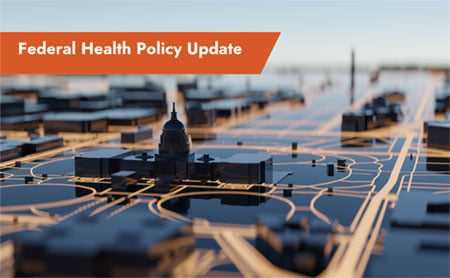The Debt Ceiling, Fiscal Responsibility Act of 2023, and the FY25 and FY26 Federal Budgets
February 14, 2025 | Catherine Jones
 Congress is currently debating how to address the nation’s debt and deficit. Reducing government spending is a key goal of the Trump administration. How Congress crafts full-year appropriations bills and implements budget cuts, with or without tax breaks, will be revealed in the coming weeks. Moreover, a failure to act on the debt ceiling could have severe negative consequences for the U.S. economy as well as federal programs.
Congress is currently debating how to address the nation’s debt and deficit. Reducing government spending is a key goal of the Trump administration. How Congress crafts full-year appropriations bills and implements budget cuts, with or without tax breaks, will be revealed in the coming weeks. Moreover, a failure to act on the debt ceiling could have severe negative consequences for the U.S. economy as well as federal programs.
The Fiscal Responsibility Act of 2023 (FRA)
As of February 6, 2025, the federal debt was $36.2 trillion, up by almost two trillion dollars from 2024 and four trillion from 2023. In June 2023, former President Biden and former House Speaker McCarthy, agreed to the Fiscal Responsibility Act of 2023 (H.R. 3746), designed to reduce deficits by about $1.5 trillion over the 2023-2033 period. The plan? Projected reduction in discretionary spending would amount to $1.3 trillion over ten years. Accrued interest on the public debt would decline by approximately $188 billion. As of January 2, 2025, the debt limit was reinstated at $36.1 trillion (up from $31.4 trillion in 2023), reflecting the total federal debt up to that point.
At its core, the FRA established statutory caps on discretionary funding for FY24 and FY25 and set limits on most discretionary funding from 2026 to 2029. Under section 101(a), caps for FY24 were $886 billion for defense and $704 billion for nondefense and, in FY25, $895 billion for defense and $711 billion for nondefense. Of note, emergency and other specific funding are not subject to these caps. Section 101(f) of title 1 set limits on discretionary funding for each year from 2026 to 2029.
Currently, the federal government is operating under a continuing resolution (H.R. 10545) through March 14, 2025, which includes approximately $110 billion in additional disaster relief and farm aid, a one-year extension of the Farm Bill, and an extension of some health care provisions. It did not include a provision to raise the debt limit. Further, passing this CR was designed to give the incoming 119th Congress more time to complete the necessary twelve full-year appropriations bills for FY25.
Current law indicates there could be a sequestration order or an across-the-board cut to all programs, projects and activities. Due to the complexities of the caps in both defense and non-defense discretionary spending, it is unclear the total percentage of the potential cuts to both these categories. ASTHO will remain vigilant and connected to the White House Office of Management and Budget to understand this further in the coming months.
What About Federal Funding for FY25 And FY26?
To date, there is no indication that the Trump administration plans to dismantle the FRA. However, the administration is actively pursuing significant tax cuts (enacted under the Tax Cuts and Jobs Act of 2017, set to expire in 2025) and increased border security funding. Some lawmakers emphasize the importance of renewing these tax cuts to promote economic growth and reduce the federal deficit. Others argue that these fiscal policies, including the proposed tax cuts and increased spending on defense and border security, will raise the national debt over the next decade. This has led to debates among House and Senate on funding strategies and spending reductions in other areas to offset possible increased deficit.
The coming weeks will prove decisive for Congress to agree on a topline number—House Republican leaders hope to reduce federal spending by up to $2.5 trillion as part of their reconciliation efforts—and craft appropriations bills when the current continuing resolution expires on March 14, 2025. Thrown into the current debate is the need for tens of billions of dollars in federal aid to California recovering from devastating wildfires.
ASTHO will continue to closely monitor developments.